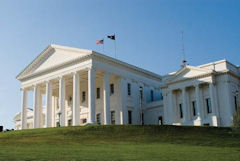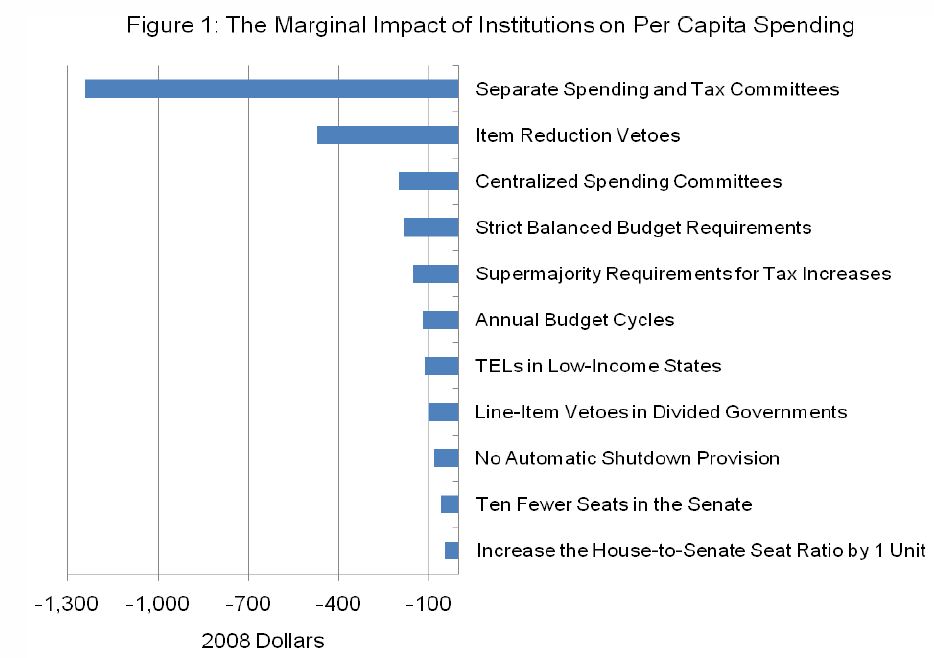 Fiscal policy is on an unsustainable path at all levels of government. While reformers should look for ways to reduce spending on particular budget items, tomorrow’s legislatures may easily reverse these cuts, argue Matthew Mitchell and Nick Tuszynski with George Mason University’s Mercatus Center. By contrast, they write, “a change in the rules that govern the political process—the ‘institutions’ that shape a budget—can have a lasting effect on spending for years to come.”
Fiscal policy is on an unsustainable path at all levels of government. While reformers should look for ways to reduce spending on particular budget items, tomorrow’s legislatures may easily reverse these cuts, argue Matthew Mitchell and Nick Tuszynski with George Mason University’s Mercatus Center. By contrast, they write, “a change in the rules that govern the political process—the ‘institutions’ that shape a budget—can have a lasting effect on spending for years to come.”
In a new paper, “Institutions and State Spending: An Overview,” the two scholars survey the literature to ascertain which institutional characteristics of state governance are associated with the lowest rates of spending growth. The clear winners: (1) separate spending and tax committees in the state legislature and (2) item reduction vetoes. Other commonly touted measures such as line-item vetoes and tax-and-expenditure (TEL) limits do have an effect but that effect is modest.
 In 2008, state and local expenditures per capita averaged $5,708 across the country. States that embraced the institutions of governance listed above enjoyed lower per capita spending by the stated amounts. (Click on chart for more legible image.)
In 2008, state and local expenditures per capita averaged $5,708 across the country. States that embraced the institutions of governance listed above enjoyed lower per capita spending by the stated amounts. (Click on chart for more legible image.)
If only Mitchell and Tuszynski would tell us which institutions are in effect in Virginia, we’d know where to get started!
— JAB


